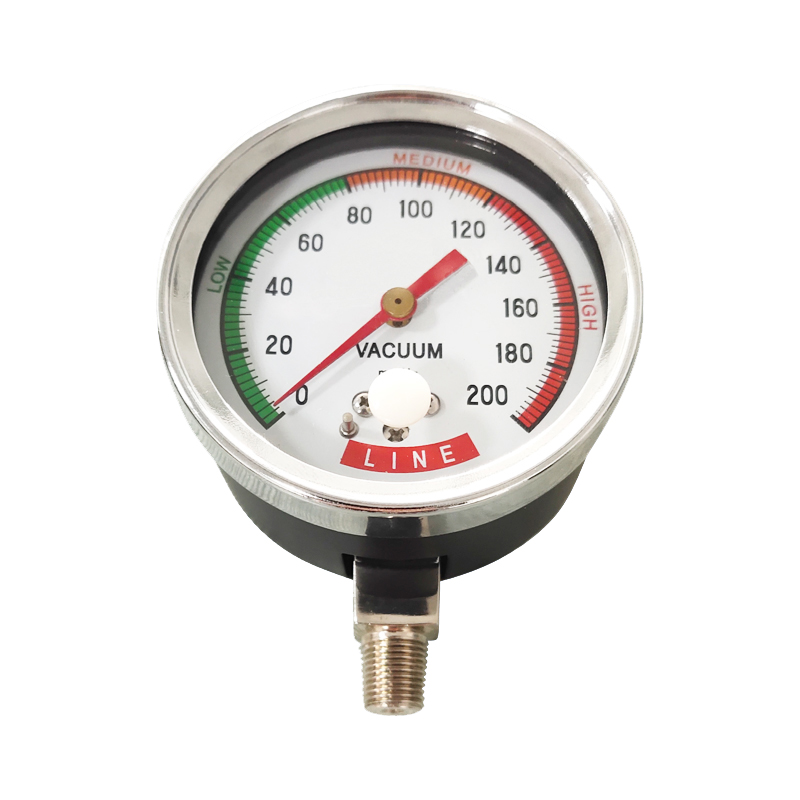
Des . 10, 2024 19:18 Back to list
Understanding the Design and Functionality of Differential Pressure Gauges in Various Applications
Understanding Differential Pressure Gauge Construction
Differential pressure gauges are essential instruments in various industries, used to measure the difference in pressure between two points within a system. Their construction is critical to their performance and accuracy, enabling them to provide reliable measurements under a range of conditions. This article delves into the key components, operation principles, and construction aspects of differential pressure gauges.
Key Components
A differential pressure gauge typically consists of several fundamental components
1. Sensing Elements The sensing element is one of the most crucial parts of a differential pressure gauge. Common types include diaphragms, piezoresistive sensors, and Bourdon tubes. These elements respond to pressure changes by deforming, which translates into movement that can be measured.
2. Pressure Ports Differential pressure gauges have two pressure ports—one for high pressure and one for low pressure. These ports ensure that the gauge can measure the pressure difference accurately. It's essential that these ports are positioned properly to prevent erroneous readings.
3. Mechanical Linkages In mechanical differential pressure gauges, linkages transfer the movement of the sensing element to a dial or indicator. This linkage system is calibrated to convert small movements into a readable scale, allowing users to easily interpret the pressure difference.
4. Housing The housing protects the internal components from external elements such as dust, moisture, and chemical exposure. It is vital for the gauge to be made from materials suitable for its operating environment, often utilizing stainless steel or plastic depending on the application.
5. Calibration Markings For accuracy, differential pressure gauges often have calibration markings along the scale. These markings help users identify precisely what the gauge is reading, enhancing user confidence in their measurements.
Operating Principle
differential pressure gauge construction

The operating principle of a differential pressure gauge revolves around the measurement of pressure differences. When fluid moves through a system, variations in flow can create pressure differences that the gauge detects. The sensing elements respond to this differential pressure, and the resultant movement is transferred through the mechanical linkages to an indicator.
For instance, in a diaphragm-based gauge, the diaphragm separates the high-pressure side from the low-pressure side. When a pressure difference occurs, the diaphragm deflects. This deflection is transferred via linkages to a needle that moves across a calibrated scale, revealing the pressure difference.
Construction Considerations
When constructing a differential pressure gauge, several factors must be taken into account
1. Material Selection The choice of materials is vital for durability and reliability. Depending on the fluids being measured, the materials must withstand corrosive environments or high temperatures without compromising the gauge’s functionality.
2. Welding and Sealing For mechanical gauges, welding techniques used to join different components must be robust to prevent leaks. Seals must be appropriately rated for the pressures and temperatures of operation.
3. Calibration Before being put into service, a differential pressure gauge must be calibrated accurately. This ensures that the readings it provides are correct, which is crucial for processes that depend on precise measurements for operation and safety.
4. Testing Rigorous testing under various conditions helps ensure reliability. Gauges should be tested for accuracy under both static and dynamic conditions to confirm that they perform optimally in real-world applications.
Conclusion
The construction of a differential pressure gauge is a complex process that combines engineering, material science, and calibration techniques to produce a reliable instrument. Understanding these aspects is crucial for industries relying on precise pressure measurements, from oil and gas to pharmaceuticals. As technology continues to advance, differential pressure gauges are likely to become even more accurate and reliable, further enhancing their role in industrial applications.
-
Fluke Differential Pressure Gauges Precision Instruments for Industrial Use
NewsMay.25,2025
-
WIKA Differential Pressure Gauge 700.01 - High Accuracy & Durable Design
NewsMay.25,2025
-
Diaphragm Pressure Gauges High-Accuracy & Durable Solutions
NewsMay.25,2025
-
High-Accuracy Differential Pressure Gauge Diaphragms OEM Factories & Services
NewsMay.24,2025
-
Water Fire Extinguisher Pressure Gauge Durable Supplier Solutions
NewsMay.24,2025
-
Handheld Digital Differential Pressure Gauge Portable, High-Accuracy & Real-Time Data
NewsMay.24,2025
